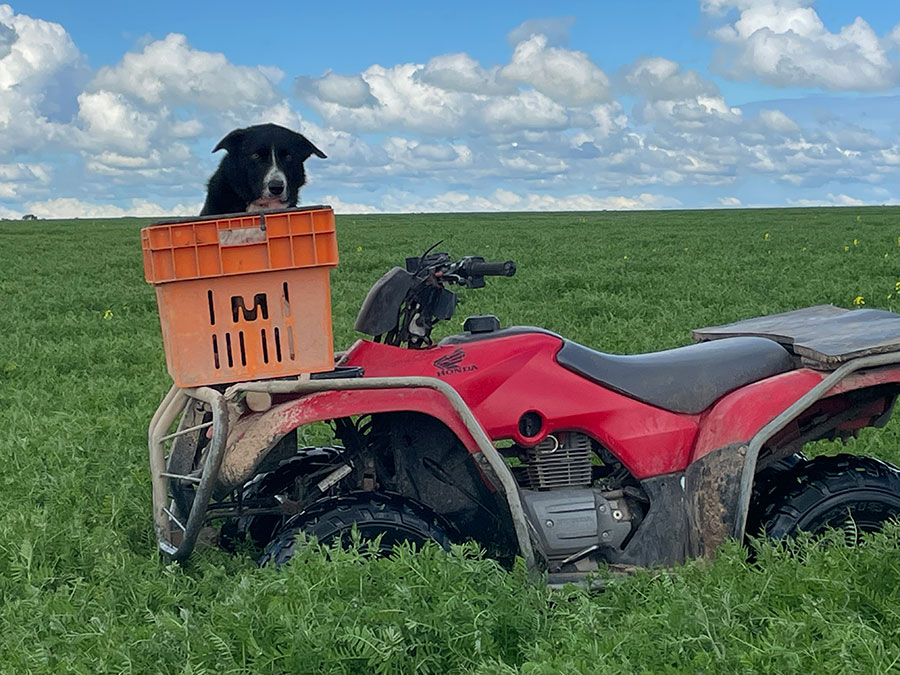Vetch is one of those crops every Australian farmer has heard of but would not always recognise when they drive past a paddock covered hip-high in a dark green tangled mass of curly tendrils, unfolding new leaves growing on vine-like stalks.
Yet in the past 30 years vetch has become an established part of Australia’s cropping landscape, especially in dryland mallee areas such as south-eastern Western Australia around Esperance, all across South Australia, in Victoria’s Mallee and central regions, and in New South Wales’ Riverina and central west cropping zones.
Belonging to the same plant family (Fabaceae) as fellow legumes, field peas and lentils, all vetches are of the Vicia genus, and so are close relatives of faba beans (Vicia faba).
A specialist vetch breeder and agronomist, Stuart Nagel of the South Australian Research and Development Institute (SARDI), believes vetch is, in many ways, the quiet achiever of the cropping world – a versatile annual legume that has several potential purposes or markets.
It can be sown as a rotational break crop with cereals to add nitrogen to the soil and to break the grass weeds and disease cycle; as a green manure to improve soil fertility; as a winter and early spring forage crop for sheep and cattle in a mixed-farming system; as a brown manure crop to suppress summer weeds ahead of direct drilling a following cereal crop; or as a high-protein, high-energy and high-value commercial hay source.
It is also grown as a source of feed grain for livestock mixes, or even as speciality bird seed.

A woolly butt vetch crop in Esperance, Western Australia. Photo: Mark Roberts
The first commercial vetch varieties were introduced into WA in the mid-1960s by CSIRO, as part of its legume program looking to address trace element deficiencies in farming soils.
But they were Mediterranean-climate vetch varieties – Blanchefleur and Languedoc – better suited to pasture as a replacement for medics or clovers, rather than grain and dry matter production, although both uses formed the basis of most vetch growing in Australia for the next 30 years.
In the early 1990s, GRDC and several state agricultural departments, led by SARDI, instigated research to develop a range of vetch varieties better suited to Australian conditions.
After slow uptake in the 1990s, rust outbreaks in susceptible varieties and an export red lupin substitution scandal involving split Blanchefleur seed, the crop’s fortunes changed with the release of Australian-bred, rust-resistant varieties better suited to local conditions.
By 2005, 200,000 hectares of vetch was being planted every year, while today it is estimated more than 300,000ha of vetch is grown annually across southern Australia.
“The game changer was the release of the first fully rust-resistant common vetch variety, Morava, by SARDI in 1999,” Mr Nagel says. “Vetch used to be regarded as a sideline secondary crop, but Morava completely changed vetch production and farmer attitudes in Australia.
“It is a credit to GRDC that it started [supporting] the vetch breeding program without quite knowing how vetch as a grain fitted into the Australian grain growing world because, while it is a legume like lentils, peas and beans, it is not a pulse as it is not grown for human consumption.”
There are three main species of vetch grown in Australia, all of which originated in the ‘fertile crescent’ of the Middle East and were domesticated hundreds of years ago, mainly because it was a drought-tolerant crop.
Common vetch (Vicia sativa), also known as grain vetch, is the most versatile of the vetch species as it can be grown for early grazing, green or brown manure, or high-value silage, hay and grain production for livestock feed. It is also ideal as a green manure crop. Across many diverse locations, different varieties of common vetch showed the most potential in terms of average dry matter and seed yield.
About 70 to 75 per cent of vetch grown in Australia is now common vetch. All Australian common vetch varieties are suitable for grain production, to be used as high-protein feed for all ruminants and a limited amount (no more than 20 per cent) in pig rations. Popular varieties include early maturing Languedoc (not rust resistant) and SARDI-bred rust-resistant varieties such as Rasina, Morava, Timok, Volga, and the just-released Studenica.
Purple vetch (Vicia benghalensis) is commonly grown in southern Europe. It is a subspecies that is later-maturing, copes with some waterlogging but does not recover well from winter grazing. It is ideally suited to niche hay production. Popular varieties include Popany and the Tasmanian-bred high-rainfall Benetas. About five to 10 per cent of vetch grown in Australia is purple vetch.
Woolly pod vetch (Vicia villosa) is predominantly grown in WA in medium-rainfall areas by graziers looking for a winter grazing crop or for paddock renovation, where it is a highly efficient nitrogen fixer. It has not been popular with haymakers and cereal croppers in their rotations in the past, as older woolly pod varieties such as Namoi had a 30 per cent hard-seeded content, meaning it continued to germinate in following years, contaminating the next wheat or canola crop.
But new, more soft-seeded varieties developed by SARDI, such as RM4, and to a lesser extent Haymaker and Capello, have eased that problem, with high dry matter yields often greater than common vetch for hay production too.
About 17 to 20 per cent of vetch grown in Australia is woolly pod. A key difference to common vetch is that woolly pod grain cannot be fed at any level to ruminants, as it contains a different toxin, meaning it cannot be grazed as a pasture or field crop after it has gone to seed, or its grain harvested to be mixed in stockfeed.

























































